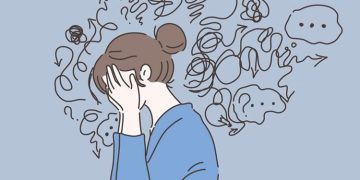
Neurodevelopmental Disorders in Adolescents

N is for Neurodevelopmental Disorders in Adolescents for #BlogchatterA2Z. Childhood mental disorders (MDs) are multifaceted with genetic defects and environmental issues. These include family dynamics, socioeconomic status, parental health, and access to monetary resources. Changing these variables can affect a child’s brain development, emotions, and social skills. This will shape their journey into adolescence and adulthood.
Understanding Mental Disorders in Children:
Neurodevelopmental disorders (NDDs) cover many conditions that affect brain development, cognitive functioning, and behaviours. Disorders like ADHD, dyslexia, and ASDs pose unique challenges for affected individuals and families. NDDs can profoundly affect a child’s life, concentration issues, learning, social interaction, and communication.
Problems in Identifying NDDs:
One of the major problems in dealing with NDDs is the precise identification and assessment. Low-income groups and marginalized people lack the resources for inclusive screening and diagnosis. This leads to miscalculation of the prevalence of NDD prevalence. Moreover, the stigma linked to mental health issues hampers efforts to classify and treat NDDs.
The Situation in India:
India has a burgeoning newborn population (about 26 million) with diverse social and cultural settings. This makes it tough to deal with childhood NDDs. The neonatal, infant, and under-five mortality rates are on the decline in India; survival of children and infants with high risk for NDDs.This will lead to more cases if there are no interventions, simultaneously. Despite substantial improvements in child survival rates, there remains a lack of data on the occurrence of NDDs. We need to make a determined effort to bridge this gap. There is a need for targeted interventions that help the needs of children with NDDs.
Neurodevelopmental Disorders in Adolescents
Understanding Intellectual Disability (ID):
Intellectual disability (ID) is a rampant neurodevelopmental disorder. Deficits in thinking categorising it and adapting. They may face difficulties in communication, socialization, and self-reliance skills. The diagnosis of ID is based on wide-ranging assessments, cognitive skills and adaptiveness.
Prevalence and Risk Factors:
The occurrence of intellectual disability differs worldwide. It’s more common in low and middle-income countries. Many factors, like genetics, physiology, and the environment, affect intellectual disability. Genetic conditions and maternal health during pregnancy raise the chances of intellectual disability. After birth, issues like brain injuries and a poor environment also increase this risk.
Treatment and Support:
Treatment for intellectual disability aims to improve individual skills and independence through different methods. These methods include therapy, education support, speech therapy, and medical help. Finding and treating intellectual disability early is important for better results and a better life.
Addressing Neurodevelopmental Disorders:
Addressing the many hurdles posed by NDDs requires an inclusive and holistic method. This includes early detection, access to the right treatment and support for affected children and their families.
We need to create awareness, promote inclusive policies, and fund research. We can provide support for children with NDDs to lead fulfilling and meaningful lives.
Childhood mental disorders, particularly neurodevelopmental disorders, are a substantial public health concern. It has far-reaching consequences for children, families, and society.
This post is part of Blogchatter’s CauseAChatter
I am participating in #BlogchatterA2Z
- A- Anxiety Disorders
- B-Bullying-A growing concern for Adolescents
- C- 10 Ways to Cope with Stress for Adolescents
- D-Supporting Adolescents with Depression
- E-Eating Disorders in Adolescents in India
- F- Role of Family in Adolescent Mental Health
- G- Supporting Adolescents in Gender identity
- H-Harmful Substance Abuse in Adolescents
- I- Helping Adolescents Navigate Identity Confusion
- J- Mental Health in Juvenile Offenders
- K-Key To a Better Future for Adolescents
- L-LGBTQ+ Adolescents Issues
- M- 5 ways to handle Teenagers Mood Swings










The situation in India is very worrying. Its hard enough for middle class parents to get a good diagnosis for their kids but imagining the lesser privileged class of parents who not only fail to family plan but also have zero understanding of these issues. The children are the ultimate victims in these cases . When we think of the larger consequence of the same kids becoming adults and having had no help, they struggle to assimilate in social society, often ending up an anti social fringe elements. Sadly, in a country like India, these issues take a back seat. Yhank you for shedding light on this.